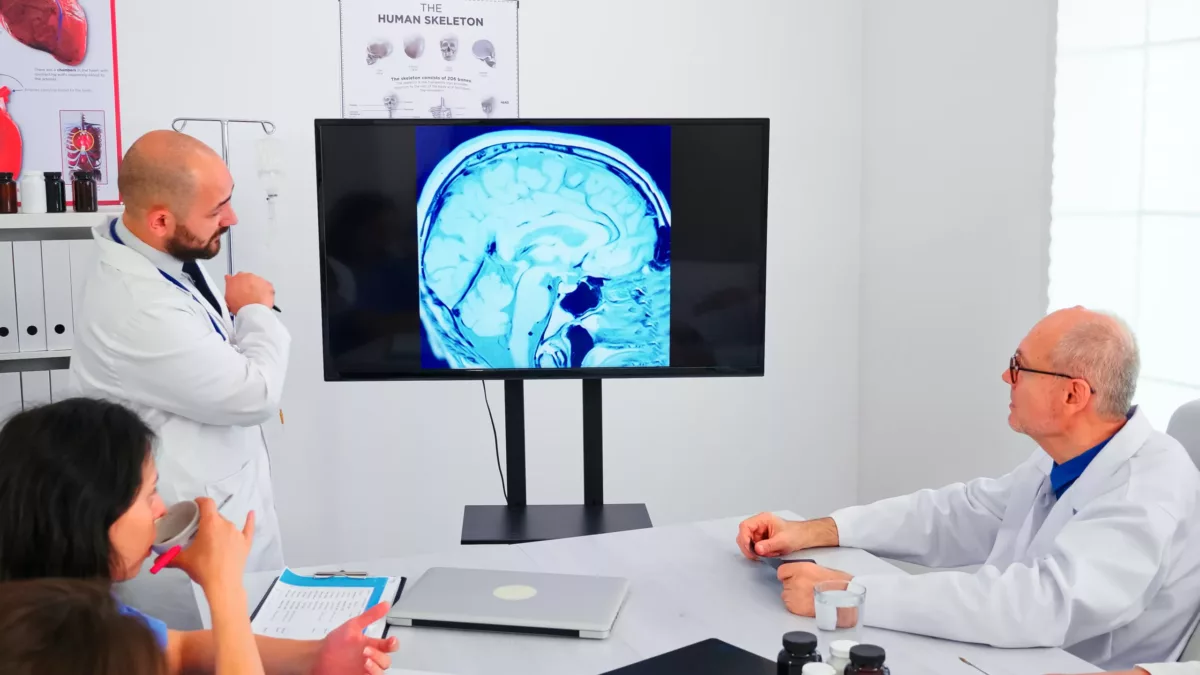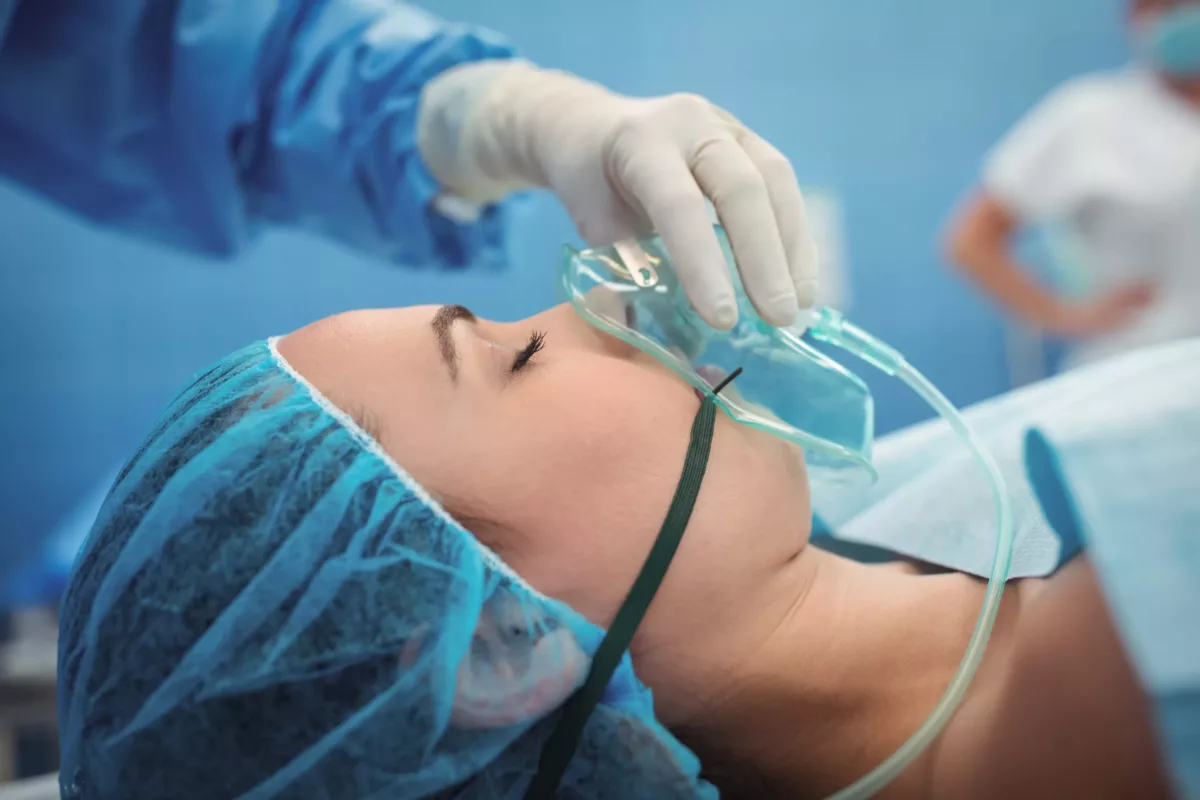A disease in which brain tissue extends to the spinal cord is called Chiari malformation. It usually happens when a skull part is misshapen or is smaller than usual. Thus, the skull puts pressure on the brain and forces it downward.
While this is a rare condition, people tend to use imaging tests, which leads to more diagnoses. Experts divided this condition into 3 types depending on the brain tissue anatomy that pushes it into the spinal canal and if brain or spinal developmental changes happen or not.
The first type develops as the skull and brain grow and cause symptoms usually in late childhood or adulthood. The second and third types of Chiari malformation are pediatric and usually are present at birth. In such cases, the condition is called congenital Chiari malformation.
Physicians usually prescribe different treatments for people with this condition. It usually includes surgery, medicines, and regular monitoring. However, in some cases, people with Chiari malformations do not need treatment.
Symptoms
Mostly, people with this disease do not experience symptoms and do not need treatment and the condition is diagnosed during tests done for another disease. However, some Chiari malformation types may cause symptoms. The most common types of this condition are types 1 and 2. Furthermore, some people may experience dangerous and even life-threatening symptoms. Check below some examples:
Type 1
The symptoms of this type usually appear during late childhood or adulthood. The primary symptoms of Chiari malformation type 1 are severe headaches, sudden coughing, sneezing, or straining. However, it may cause other symptoms as well. For example:
- Neck pain
- Problems with balance and walking
- Poor coordination
- Numbness and tingling that happen usually in the hands and feet
- Swallowing problems
- Dizziness
- Speech changes
Check below some symptoms that appear less commonly in people with Chiari malformation type 1:
- Weakness
- Decreased heart rate
- Tinnitus (ringing in the ears)
- Scoliosis (curvature of the spine)
- Breathing problems (including central sleep apnea and others)
Type 2
In such cases, the amount of tissue that extends into the spinal canal increases compared to the first type of the disease. The most common symptoms include myelomeningocele (it occurs when the backbone and the spinal canal do not close normally during pregnancy). Check below other symptoms:
- Weakness in the arms
- Quick downward eye movements
- Swallowing problems
- Breathing pattern changes
This Chiari malformation type is usually diagnosed during pregnancy with ultrasound. This is an imaging test that uses sound waves to make pictures of multiple structures and organs of the body.
Type 3
This is the most severe form of the Chiari malformation and it causes a part of the cerebellum (lower back part of the brain) or brainstem to extend through a skull opening. The third type of disease can also be diagnosed with ultrasound before birth. People with this Chiari malformation type are at higher risk of brain and nervous system problems and even death.
If you notice that your child experiences any of the previous symptoms, immediately contact your healthcare provider. However, many health conditions can cause symptoms similar to Chiari malformation. That’s why it is important to see a doctor for diagnosis.
Causes
This condition usually happens when a part of the skull is too small or misshapen. When this skull part is missing or too small, the skull puts pressure on the brain, which leads the tonsils (the lower cerebellum part) to move into the upper spinal canal. In most cases, this disease is linked to a form of spinal bifida (also known as myelomeningocele).
Generally, when the cerebellum part goes into the spinal canal it interacts with the cerebrospinal fluid flow that protects the spinal cord and brain. As a result, fluid buildup in the brain or spinal cord may occur or it may block the signals that travel between the body and brain.
Risk Factors
While some experts think this disease runs in families, researchers still study the possibility of the hereditary component.
What Are The Potential Complications of Chiari Malformation?
There are some people who do not experience symptoms and do not require treatment. However, this condition worsens over time and may cause serious and even life-threatening complications. Check below some examples:
- Hydrocephalus – This is a condition in which fluid builds up in the brain and may cause thinking problems. It usually is treated with a shunt that helps remove excess fluid.
- Spina bifida – This complication causes the protective covering of the spinal cord not to develop properly, which may lead to paralysis and other serious conditions. Commonly, people with type 2 of the disease experience myelomeningocele (a form of spina bifida).
- Syringomyelia – Sometimes, people with Chiari malformation develop a condition in which a cyst or cavity (syrinx) forms within the spinal column. When syrinx becomes too much it puts pressure on the nerves and may cause weakness, stiffness, and pain.
- Tethered cord syndrome – This condition causes the spinal cord to attach to the spine, which leads to the spinal cord to stretch. Therefore, you may experience severe nerve and muscle damage usually in the lower part of the body.
Diagnosis
Usually, to diagnose this condition physicians perform a physical examination to check for abnormalities linked with Chiari malformation and ask some questions about your medical history and symptoms. Check below some tests often used to confirm the disease:
- MRI (magnetic resonance imaging) scan – This test uses radio waves and magnets to make detailed images of the brain and surrounding tissue. However, it can be used to diagnose other conditions that occur in other body parts.
- CT (computerized tomography) scan – This imaging test is used to get cross-sectional images of the body. It is usually used when doctors suspect brain damage, tumors, blood vessel problems, and other health problems.
Treatment
The treatment is usually different among people with Chiari malformation because it depends on multiple factors. These include whether a person experiences symptoms or not, existing health problems, when it is diagnosed, and others.
Surgery
Commonly, the symptoms of Chiari malformation are treated with surgery that helps reduce pressure and prevent more damage to the nervous system and complications. It helps restore the flow of the cerebrospinal fluid and reduces pressure on the cerebellum and spinal cord.
In most cases, physicians recommend posterior fossa decompression (a surgery often used in people with Chiari malformations). It involves the removal of a small part of the bone in the skull back, which allows more space for the brain. The brain covering (dura mater) may be opened during this surgery to provide more space for the brain.
Like other surgeries, this one involves multiple risks including infections, fluid in the brain, cerebrospinal fluid leakage, bleeding, delayed wound healing, and others. Discuss with your healthcare provider about the benefits and risks before surgery. In some cases, the risks may outweigh the benefits and doctors may recommend other treatments.
Frequently Asked Questions
What is the life expectancy of someone with Chiari malformation?
Usually, people with this disease have a normal life expectancy, especially with early diagnosis and proper treatment. Those who do not experience symptoms also tend to have a normal life span.
Does Chiari’s malformation get worse with age?
Yes, this condition worsens over time and may cause serious and even life-threatening complications. While symptoms of the disease may occur at any age, they mostly appear in late childhood or adulthood.
What are Chiari malformation complications?
Check below some complications that may occur in people with Chiari malformation:
- Paralysis
- Muscle weakness
- Palpitations
- Hypertension (high blood pressure)
- Sleep apnea
- Respiratory failure
- Syringomyelia
- Hydrocephalus
- Tethered cord syndrome
- Delayed motor development
- Behavioral issues
- Chronic pain
- Death (in severe cases)
This article does not contain a full list of this disease’s complications. Consult with your doctor about ways to reduce the risk of developing Chiari malformation complications and improve your quality of life.




